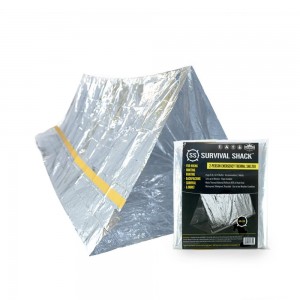Basic Needs and Supplies

Before we dive into individual shelter building ideas, it’s important to go over a few basics that every survivalist and prepper should be aware of.
Floor Bed
It is absolutely critical that you build an insulated floor bed for your shelter area. This can be done in a wide variety of ways, ranging from gathering leaves and twigs to rocks (and, even better, a combination of the three). The idea here isn’t to build something that is super comfortable, although that is a nice bonus if you’re able to pull it off.
Instead, you’re looking for a way to raise your body at least a few inches off of the ground so that you won’t absorb so much of the cold. During the winter, putting something between yourself and the ground could easily make the difference between living and dying.
RELATED: Top 50 Emergency Preparedness Items to Stockpile [CHECKLIST]
If you have a blanket or something else soft you can put on top of the area you build, this will give you a nice top layer for comfort. As an added bonus, this will also provide you with even more insulation from the freezing cold ground.
Sticks, Branches, Logs, etc.
Almost every emergency survival shelter involves a lot of branches, logs and sticks, and there’s a very good reason for this: they work. Basically, if you’re anywhere in the woods, you should be able to find the components you need to put together at least a simple A frame style shelter. And if for some reason you can’t, you can at least find some shelter between trees as rain, snow and other elements won’t hit you as hard as they would in an open area.
Emergency Blanket and Shelter
A heat-reflecting emergency blanket is always the right call to take up some of your precious bug out bag space. You can take this a step further with an emergency survival shelter made from the same material (such as the one in the nearby picture). These survival tools can make a huge difference, so we recommend having at least one of them with you anytime you go into the woods.
